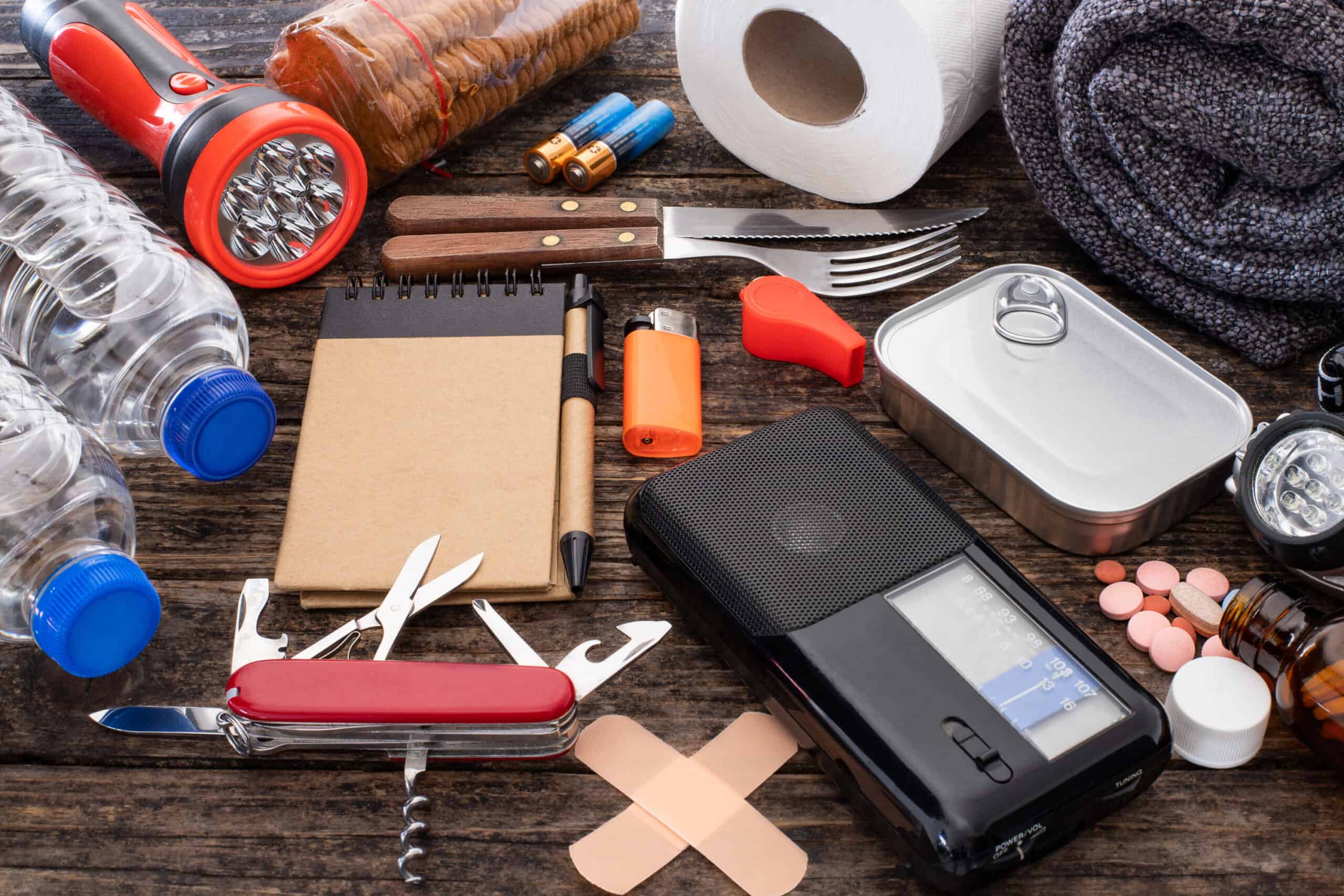Resize Text-+=
Emergency Supplies Kit
After an emergency, you may need to survive on your own for several days, so it’s important to be prepared. That means having your own food, water, and other supplies to last for several days. A disaster supplies kit is a collection of basic items your household may need in the event of an emergency. Make sure your kit includes all the items on this checklist.
Basic Disaster Supplies Kit
Water (one gallon per person per day for several days, for drinking and sanitation)
Food (at least a several-day supply of non-perishable food)
Battery-powered or hand crank radio and a NOAA Weather Radio with tone alert
Flashlight
First aid kit
Extra batteries
Whistle (to signal for help)
Dust mask (to help filter contaminated air)
Plastic sheeting and duct tape (to shelter in place)
Moist towelettes, garbage bags and plastic ties (for personal sanitation)
Wrench or pliers (to turn off utilities)
Manual can opener (for food)
Local maps
Cell phone with chargers and a backup battery
Additional Emergency Supplies
Masks, soap, hand sanitizer, disinfecting wipes
Prescription and OTC medications and vitamins
Pain relievers, anti-diarrheal drugs, antacids, laxatives
Prescription eyeglasses and contact lens solution
Infant formula, bottles, diapers, wipes, creams
Pet food and extra water for your pet
Cash or traveler’s checks
Important documents (insurance policies, ID, bank records, etc. saved electronically or in a waterproof container)
Sleeping bag or warm blanket for each person
Change of clothing and sturdy shoes
Fire extinguisher
Matches in a waterproof container
Feminine supplies and personal hygiene items
Disposable tableware, paper towels, utensils
Paper and pencil
Books, games, puzzles, activities for children
We have a handy guide you can refer to any time for a succinct overview of the emergency kits we’ve covered here.
Get the “Be Prepared Before a Storm Strikes” PDF

Informational Videos
Keep Your Kit Handy & Maintained

Shelter & Your Emergency Kits
Sheltering is appropriate when conditions require that you seek protection in your home, where you work, or other location when emergencies arise, such as during a tornado warning. This can mean: Stay-At-Home, Going to a Mass Care Shelter, or Sheltering in Place. Your emergency kits will come in handy in any of these situations.
